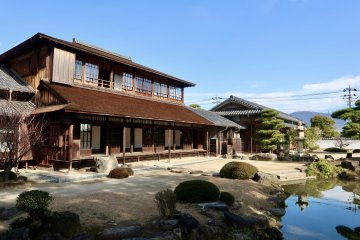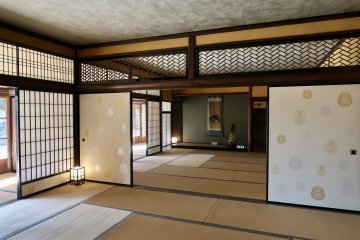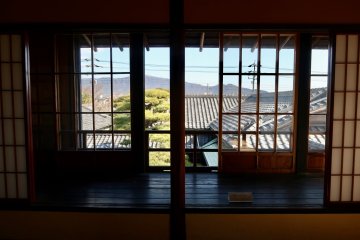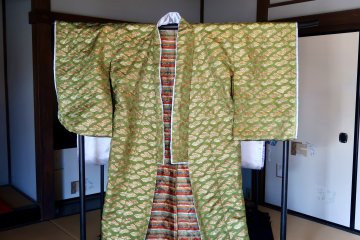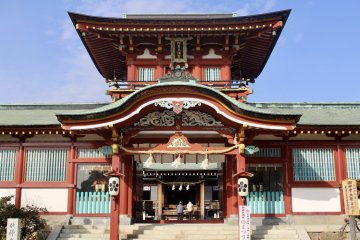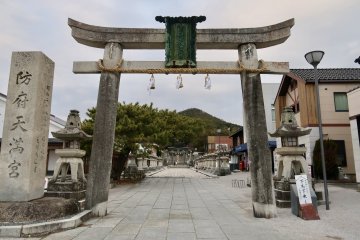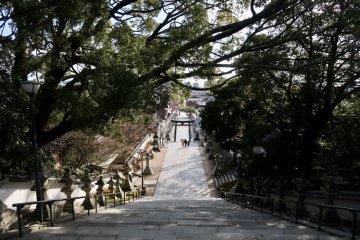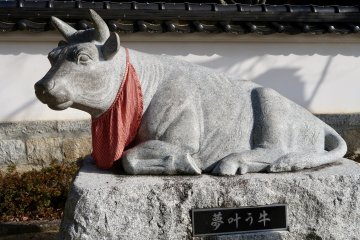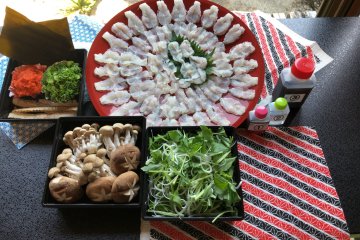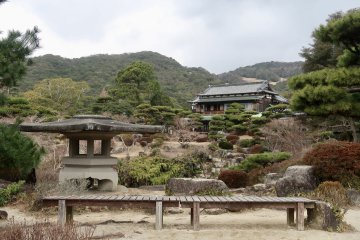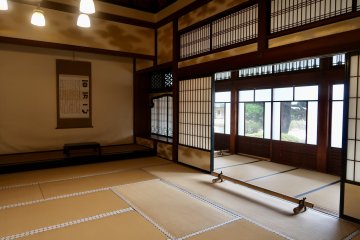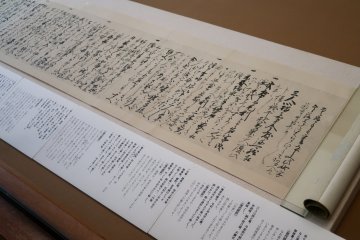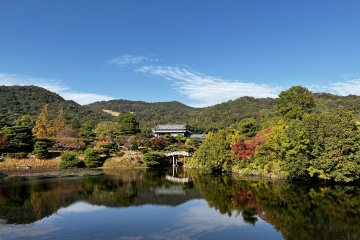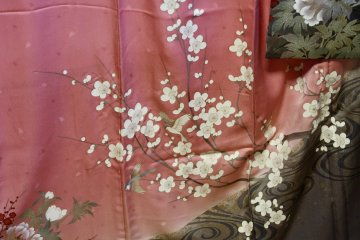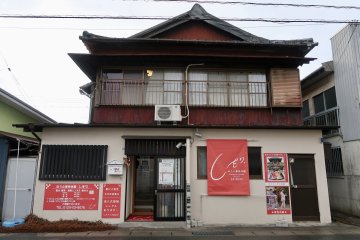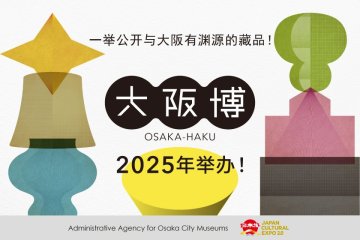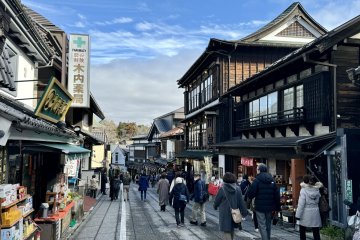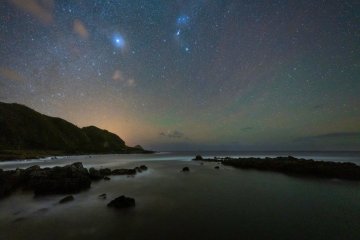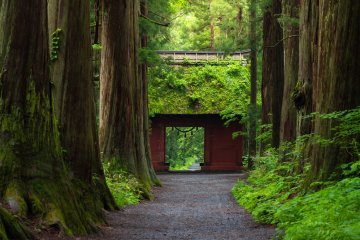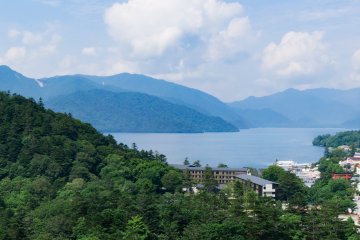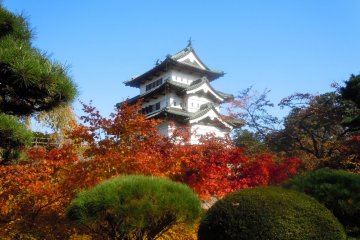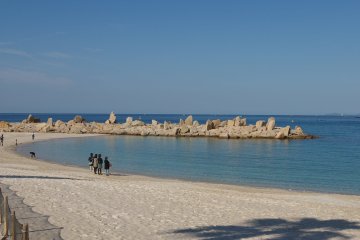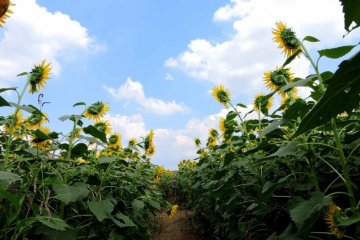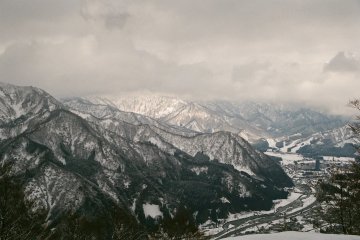Japan’s cultural heritage is one of its greatest assets.
These traditional wonders offer insights into different ways of life and beautifully showcase the past’s aesthetic charm. Although tourist hotspots, like Kyoto, tend to dominate visitor’s itineraries, Japan is home to a slew of destinations where you can step into the past while simultaneously stepping off the beaten path. One such hidden gem is Hofu City in Yamaguchi Prefecture, located in Western Japan!
Hofu rests along the Seto Inland Sea and is just south of Yamaguchi City, which was placed at #3 on The New York Times “52 Places to Visit in 2024.” This small city served as the residence for multiple historical figures and today, features immaculately preserved structures that capture its past prestige. Given its oceanside location, Hofu is also renowned for its delectable seafood, including fugu (pufferfish) and the lesser known hamo (pike conger).
Hofu’s residents are extremely proud of their city’s heritage and are passionate about sharing their hometown’s unique offerings. Read on to learn more about Hofu’s cultural sights!
Eiunso

Eiunso, established in 1654, originally served as a residence for the Mohri clan, a powerful family of daimyo (feudal lords) who oversaw present day Yamaguchi Prefecture on behalf of Japan’s shogun (military leader). As a part of their duties, the Mohri clan would reside in Edo (modern day Tokyo) every other year, and during their journey to Edo, they would stay at Eiunso. Even after the end of the feudal system, the family still used the home as a personal residence. Later in 1939, the family donated Eiunso to Hofu City, and, in 2011, Hofu City opened Eiunso to the public. Today, the impressive complex is recognized as a national historic site.

With its prestigious reputation, it is no surprise that Eiunso stands as a mesmerizing feat of craftsmanship and design. While the once sprawling complex is now only succeeded by one building, a tea house, and a Japanese garden, the remaining structures well represent its past grandeur and feature elements of Edo (1603-1867), Meiji (1868-1912), and Taisho (1912-1926) Period Japanese architecture!

The main building has two stories filled with points of interest, including tatami floors with decorated borders, shoji doors adorned with the Mohri family’s crest, and masterful wood carvings.

On the second floor, which is called Taikanro and has a roof made of hiwadabuki (cypress bark roofing), you can see Ohirayama, Hofu’s tallest mountain! This floor also plays host to Eiunso’s moon-viewing event (September or October 2024).

Outside, the Japanese garden exudes tranquility with its peaceful composition of trees, stone lanterns, and central pond and is home to a 240-year old tea house built in the Edo Period style.
Heian Period costumes at Eiunso

To further immerse yourself in Hofu’s past, why not don traditional clothing from the Heian Period (794-1185)? Presently, Eiunso has three available costumes that were passionately sewn and designed by students from Yamaguchi Prefectural Hofu Shoko High School. Although the students had little to no experience in clothes making, they worked hard with the support of volunteers to craft the garments from scratch. Through the costumes, the students hope to inspire future generations, promote Hofu with their unique perspectives, and offer costume experiences for tourists.

One available costume is a blue hunting robe, which was designed to recreate the aristocratic days of Oe no Hiromoto, an ancestor of the Mohri family. The students also produced two kouchiki inspired by Sei Shonagon, a Japanese author, poet, and court lady who is said to have lived in Hofu around the 10th century. The students designed the adult version with noble Heian Period colors of purple and green and the children’s version with lighter colors, predominantly pastel pink.

The garments are designed to slip over wearers’ clothes and feature elegant fabrics adorned with metallic hues. The quality of the designs and compositions is incredibly impressive. Guests are allowed to take photos throughout Eiunso’s interior, but cannot go outside to preserve the clothing.
The high school students are extremely proud of their creations and are ecstatic that visitors can now wear them. If you visit Eiunso, we highly recommend trying on the costumes!
Hofu Tenmangu Shrine

One of Hofu’s most iconic sights is Hofu Tenmangu Shrine. This shrine was established in 904 for the deification of real-life aristocratic scholar Sugawara no Michizane (845-903). On Michizane’s way to Dazaifu, Kyushu, he stopped in Hofu. When he died, miracles occurred in the Hofu, convincing people that Michizane’s soul desired to return. Hofu Tenmangu Shrine was built the following year.

Hofu Tenmangu Shrine is the oldest of the 12,000 Tenjin shrines in Japan, and its entrance torii (gate) is the oldest stone torii in Yamaguchi Prefecture, according to the year of dedication inscribed on it. After passing through this torii and following the lantern-lined walkway, you will reach the shrine’s Roumon, or gate to the place of worship, which is painted red to ward off evil.

Throughout the complex, there are numerous odes to Michizane, including ox statues, which symbolize Michizane’s animal messenger, and 1,100 plum trees as they were his favorite flower and inspired many self-composed songs.

The shrine is also home to the Hofu Tenmangu Shrine Museum, which has a collection of approximately 600 items that people have presented to the shrine as votive offerings, including 9 nationally designated important cultural properties, ancient books, scrolls, artwork, armor, and more.

The shrine also features a tea house built in 1991 where you can enjoy matcha and traditional Japanese sweets in a quaint room overlooking a Japanese garden.
Hamo-juku and hamo cuisine

In addition to its outstanding fugu (pufferfish) cuisine, Hofu is also famous for its hamo dishes. Hamo, called pike conger in English, is a small, eel-like fish from the Seto Inland Sea. Among many things, this fish is best known for its difficult preparation process. One hamo is said to have as many as 2,000 to 3,000 bones! Typically, it takes chefs about five years to completely master hamo preparation.

Interestingly, hamo cuisine originated in Kyoto since Yamaguchi fishermen would ship their catches to Kyoto-based chefs. However, in recent years, Hofu has established hamo cuisine as its own and founded Hamo-juku, a school that specializes in training hamo chefs. This school established a standard method of hamo preparation to ensure consistent quality across Hofu’s restaurants and continuously aims to develop new hamo dishes. Hamo-juku’s brand is called Tenjin-hamo.

Hamo is in season from May 10 to October 15, with July to August being considered the peak months for quality hamo. Hamo is prized for its mild flavor and elegant fat content without being oily. Some of the most popular hamo dishes are sashimi, yubiki (parboiled hamo), fried hamo, and hamo shabu shabu (a type of Japanese hotpot). Many restaurants also prepare hamo course meals where you can try numerous iterations of the fish in one sitting.
Thanks to its proximity to the Seto Inland Sea, Yamaguchi is the best place to enjoy cheap, high-quality hamo. Presently, Hofu has ten restaurants that serve Tenjin-hamo cuisine, most of which require reservations. If you visit Hofu during hamo’s off season, you can still enjoy fugu, which has an opposite off season to hamo.
Mohri Garden and Former Residence

When Japan’s feudal system came to an end and daimyo lost their power, the Mohri family decided to build their new residence in Hofu since the area had a warm climate and close access to the sea. Mohri’s grand manor was completed in 1916.

Today, the home is designated as an Important Cultural Property and is regarded as one of the country’s best examples of modern Japanese architecture. While the exterior and interior still embody Japan’s past aesthetics, the home includes numerous elements that differentiate it from typical traditional Japanese houses.

Here, you can admire expert carpentry, tatami, and sliding shoji doors, as well as western features, such as light fixtures, a western-style staircase, and glass windows. From the second floor, the home has a balcony that overlooks the Mohri family’s expansive Japanese garden with a distant glimpse of the Seto Inland Sea between mountains.

The home also includes the Mohri Museum, which showcases a number of historical items collected by the Mohri family, which are rotated about once every two months. Among the museum’s roughly 20,000-item collection, are picture scrolls, samurai armor, a katana, a 200-year old card game, artworks, and dishes. The treasures range from 250 to 1,000 years old.

Of course, one of the residence’s greatest treasures is its garden. The Mohri Garden combines numerous different garden styles and beautifully integrates plantlife, water features, and man made structures with the mountainous scenery so the home stands in harmony with the environment. The garden is especially popular during cherry blossom season and autumn.
Kimono rental at Shiwori

What would a cultural journey in Japan be without a kimono rental! Shiwori, located a short eight-minute walk from Eiunso, is a kimono rental shop that offers typical kimono and yukata (summer kimono) options, as well as maiko (apprentice geisha) clothes and oriental dresses. The oriental dresses, which are creatively re-styled versions of kimono, are unique to this facility. Presently, Shiwori is hosting a collab event where groups of seven or more can wear kimono and handle a real katana. For this course, please email the facility one month in advance.

Given Shiwori’s location, Eiunso serves as a popular spot for kimono-wearers to pose in their colorful garb. Eiunso even has a private room where women renting traditional kimono can change into the oriental dresses using the same kimono. If you are looking for an experience to differentiate your trip, we highly recommend the “Oriental Kimono” plan since you can enjoy two dresses in one! And with Eiunso’s picturesque sceneries, you are guaranteed to make lovely memories you will not soon forget.

Reservations are available by phone, email, and a booking website. However, for English speakers the facility recommends that you send your reservation through email and request an interpreter so the process goes more smoothly. Interpreters are available at no extra charge. Walk-ins are okay as well; however, the facility may not be available. Also, please note that Shiwori can do simple hairstyles, but for more extravagant looks and makeup, you must visit a separate facility, which is only a few minutes walk away.
The reservation email is: sachiko.bibi5577@gmail.com
So, is Hofu City a part of your next trip to Japan?
An often overlooked destination in Western Japan, Hofu City is a cultural oasis filled with awe-inspiring wonders waiting to be discovered. The city sits in harmony with the mountains and sea and features grand architecture inspired or directly built by prominent people in Japanese history. Explore its distinguished culture for yourself and uncover a less touristy side of Japan.
Access to Hofu
From Tokyo, Hofu is accessible via plane and shinkansen. The flight from Haneda Airport to Yamaguchi Ube Airport is about 1h 45m. From the airport, you can use a rental car (45m) or public transportation (1-1.5h) to reach Hofu Station. Alternatively, you can ride the Tokaido-Sanyo Shinkansen to reach Shin-Yamaguchi Station from Tokyo Station (4h 25m) or Shin-Osaka Station (1h 55m). From Shin-Yamaguchi Station, Hofu Station is a short 17m train ride on the San-yo Line.




